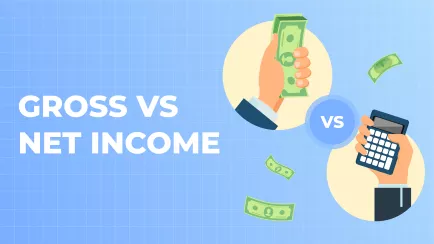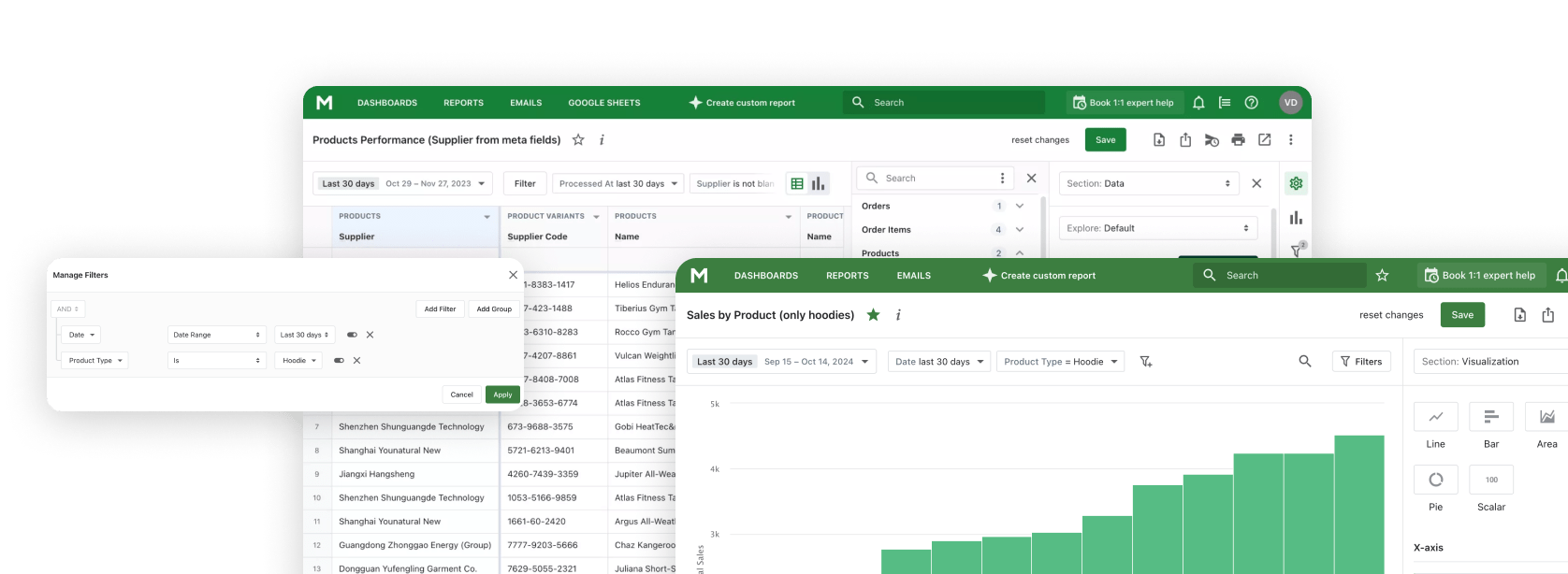Inventory management is an essential part of running a store. Knowing how fast your stock gets sold out will help you plan replenishment and assess the effectiveness of your business strategy. Today, we will discuss sales velocity in Shopify to help you with inventory management.
Why does inventory management matter?
First off, let's establish the importance of inventory management. Around 47% of Shopify stores have more than one storage location. Moreover, 85% of Shopify merchants must monitor and manage their inventory. That’s why metrics such as sales velocity are important. They help to plan, avoid stockouts, and eliminate dead-weight products. So, let’s dive into the details.
What is sales velocity?
Sales velocity represents the speed at which you sell products. Sometimes, it is also called inventory velocity and average daily sales. Sales velocity is directly connected to your restocking strategy, inventory management and planning process and can help you improve it.
Low values generally mean your pipeline is too slow or your products are underperforming. Of course, there is a difference in values between small- and large-scale businesses. However, high sales velocity is a good goal to strive for. But why is that?
How does sales velocity can influence inventory management?
Knowing your sales velocity value, you may assess how quickly your stock sells out. High sales velocity necessitates a high rate of restocking. Otherwise, you will have no products to sell, and commerce will slow down. These simple conclusions help you plan out a restocking policy. If you have several warehouses and dealers in different parts of the country, the process must be adjusted to account for delivery time, sorting process, etc.
On the other hand, if you have low sales velocity, you probably don’t need to restock often. Excessive resupply can result in dead-weight products that don’t have time to sell out and just clutter the warehouses. If that’s the case, a better strategy is to focus on advertisement, customer retention, and experience.
Minimization of stock and wasted funds
Having a few spare products to back up the demand is good. However, having dozens of unsold items and investing in ordering more can harm your Shopify store. Essentially, you are wasting funds on things that will not yield profit. Sales velocity is a good measuring line, telling you what parts of commerce you must focus on. Low velocity with a lot of stock – focus on the sales pipeline. High velocity in general – focus on the logistics.
Sales velocity effect on revenue
Revenue and sales velocity are not the same thing, but they are directly related. High velocity shows a healthy selling pipeline. With a proper working sales process, your revenue will increase. Since sales velocity accounts for item prices and win rate, its increase indicates revenue growth. That is why sales managers are chasing high numbers of sales velocity. The same applies to Shopify stores – raising sales velocity is good for your shop.
Explore related reports
Sales velocity calculation
To calculate sales velocity for the Shopify store, you must simply divide the number of sales in a certain time frame by said time frame in days. Putting it into the equation format, we will get this:
Sales Velocity = Sales in N days ÷ N
The wider your time frame, the better because it paints a clearer picture of your Shopify store’s efficiency. Commonly, sales velocity is calculated for 30, 90, and 365 days.
Out-of-stock accounting equation
The basic formula only gives baseline information. You can modify it to get more accurate data about your stock turnover. For example, let’s say you want to calculate sales velocity for a certain smartphone within a 30-day timeframe. Throughout those 30 days, it had out-of-stock days. Counting them in is incorrect because, in those days, this smartphone could not possibly be sold.
To account for out-of-stock days, you need to extract them from the timeframe. The formula will look like this:
Sales Velocity = Sales in N days ÷ (N - Out-of-stock days)
However, out-of-stock days are not the only thing that affects statistics. There are outside factors you should consider when calculating sales velocity.
Outside factors that affect sales velocity
The raw statistical numbers can give you good insight, but you must consider outside factors for the best result. Generally, there are three important factors:
- Seasons. Buying capabilities and desires change with the seasons. Summer is always the busiest season, and winter is the slowest. However, some Shopify stores have to consider other types of seasons. For example, clothing stores have to consider fashion seasons because, at their start, there will be an influx of buyers.
- Holidays. Christmas, New Year, Mother's Day, and other holidays always temporarily increase sales in a week or month around them. These events have to be accounted for.
- Sales. Black Friday, stock clearing sales, and new discounts will always sway the statistics.
Sales velocity for new products
When calculating sales velocity for a Shopify store, you must be mindful of newly added items. Short calculation scope will likely incorrectly represent their velocity. New additions to the inventory can show exceptionally high or low sales in the first month. So, to see how new additions influence velocity, you need to gather long-running data.
Tips on effective inventory forecasting
Knowing sales and inventory velocity helps to forecast resupplies and organize inventory management. When you know how fast your sales pipeline is working and how quickly your supplies are running out, you can adjust logistics to account for that. However, we still have a few important pieces of advice that will further enhance your inventory forecasting.
Smartly actualize your data
While large-scope statistics are useful and retain their actuality for quite some time, it is important to actualize small-scope data frequently. For example, use the ABC classification technique. Divide your inventory into categories based on value for the commerce. The A-category items will be the most profitable and important to sell. Calculate sales velocity for them frequently while giving other categories less attention, thus freeing up time.
Adjust the timeframe
Also, consider the sales speed of your Shopify products. Items such as clothing, toys, and other small goods will sell faster but for lower prices. However, car spare parts, jewelry, PC components, and similar items will sell slowly but for more money. So, the timeframe for calculating sales velocity for them must be different.
Automate the process
Collecting, calculating, and analyzing statistics is a slow and tedious process. Luckily, there are inventory planning apps for Shopify stores that can help you automate those processes. Shopify Reports apps will gather all necessary information from your database, wrap it into coherent charts, and offer filters and sorting options. Some apps will even help you to calculate the best restock tactic.
Synchronize with suppliers
If your Shopify store is directly connected to manufacturers, it is vital to keep in contact and ask them for relevant data. For example, knowing the lead time can help you avoid product shortages. Lead time shows how long it takes to complete processes, such as product creation. For example, knowing that a new batch of items will be ready every 20 days, you can account for that in your replenishment strategy.
Summary
Sales velocity is a vital metric that may help you forecast resupply, adjust commerce strategy, and assess the general health of your Shopify store. The equation for sales velocity is simple:
Sales Velocity = Sales in N days ÷ N
However, there are some important nuances that you must consider to get accurate data. For example, account for holidays, differentiate the scope of statistics, etc. Using our tips, you can get accurate results and improve your inventory management.
Shopify Inventory Reports complement sales velocity analysis by providing insights into stock levels and turnover rates, helping to ensure efficient inventory management and timely resupply.




